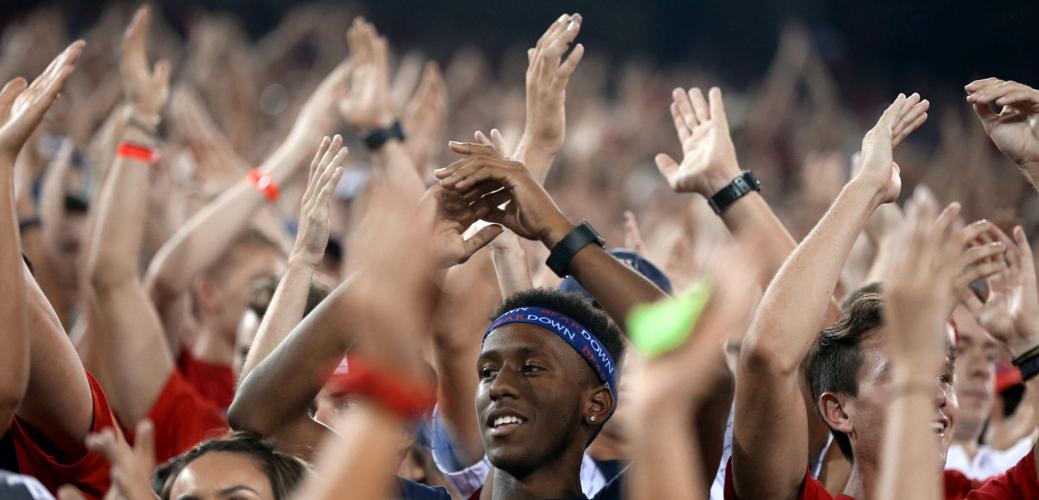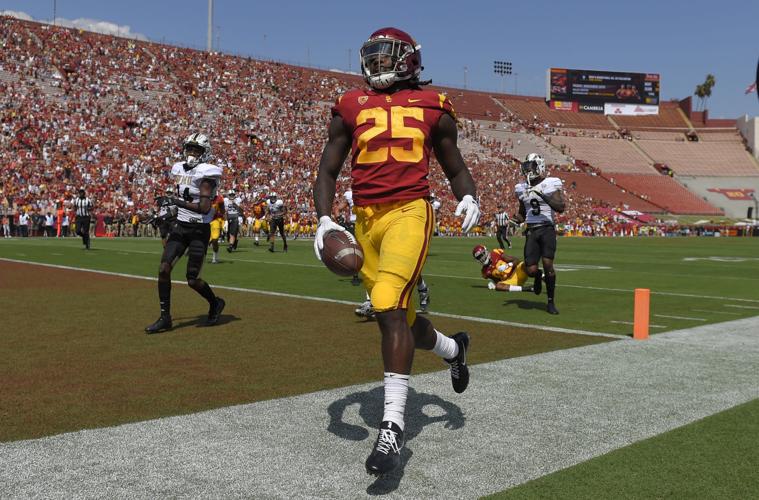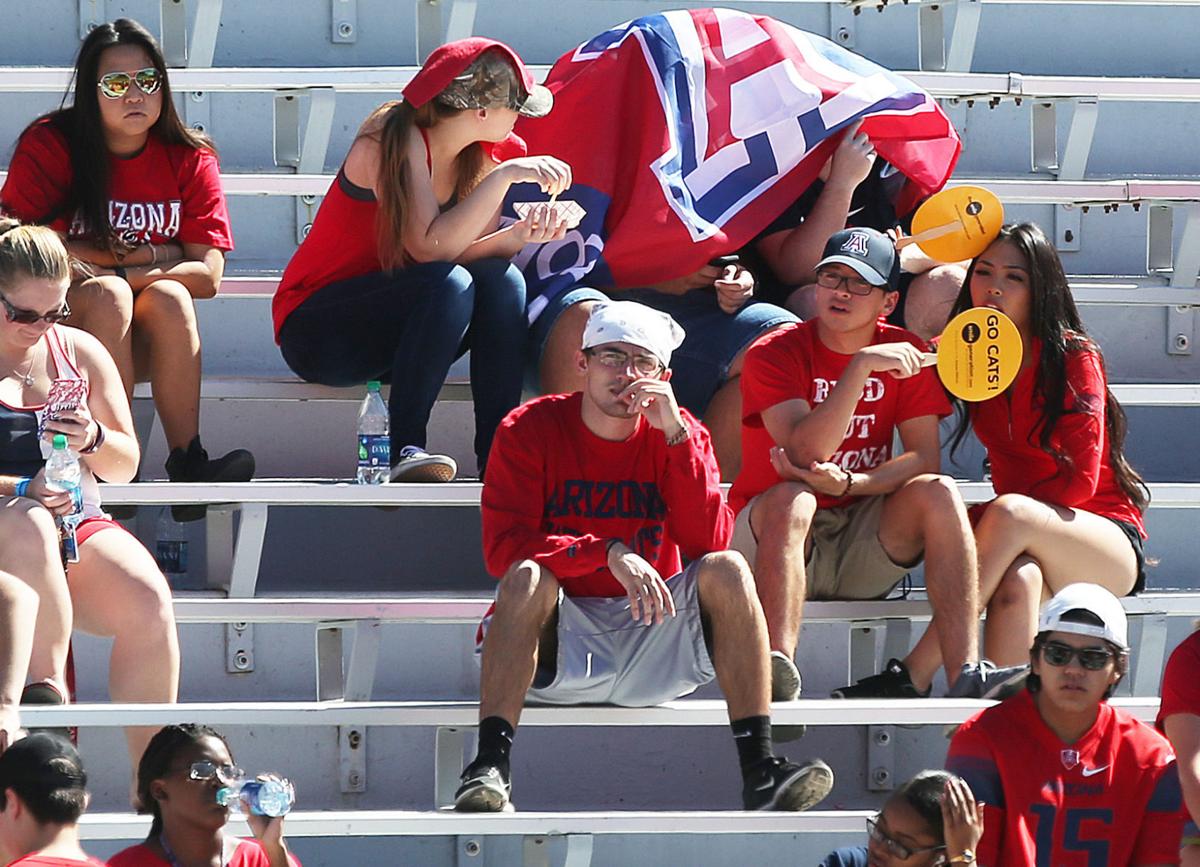More than 96,000 seats went unsold during the Pac-12’s eight season-opening home games, a growing pickle that can be linked to four annoying variables:
The season starts too soon.
The games start too late.
The games are too long.
Schedules are overloaded with cupcakes.
It was 98 degrees at kickoff when USC played Western Michigan on Saturday a bit after noon. Only 61,125 attended at the Los Angeles Coliseum, leaving roughly 32,000 empty seats.
Arizona drew its smallest opening-night crowd since 2003, a mere 43,620, in what was the latest kickoff (8:01 p.m.) to a home opener in school history. The final play was snapped at 11:21 p.m.
On a Thursday night at Sun Devil Stadium, one of the smallest home-opening crowds in 40 years, 46,596, watched Arizona State beat New Mexico State in a game that ended at 11:16 p.m.
On a scorching hot weekend in Los Angeles, UCLA, which was the only Pac-12 school willing to open against a formidable Power 5 opponent, Texas A&M, drew just 64,635 amid a backdrop of 30,000 empty seats at the Rose Bowl.
These are disturbing trends for all of who don’t benefit from TV and media rights money paid to the Pac-12 schools.
Sanity is slipping away; the reason college football used to start in the first week of October is because no one wanted to play — or watch — a game played in excessive heat. Arizona opened as late as Oct. 2 in 1937, and didn’t open a season before the final week of September until the 1950s. After that, with the advent of an 11th regular-season game, Arizona and most college football teams opened in mid-September.
It further evolved when the Wildcats joined the Pac-10; Arizona opened the football season on Sept. 2, 1979, and over the last 21 years has played its first game in August eight times.
There is no turning back. Now each school plays 12 regular-season games. Extending the season into December isn’t going to happen because (1) it’s too cold in half the country and (b) conference championship games now own the first weekend of December.
More fans are staying home. More stadiums are shrinking.
When Stanford Stadium was constructed in 1927, capacity was 89,000. Now the rebuilt Stanford Stadiums seats 50,000. Sun Devil Stadium, which long could hold almost 75,000, has been reduced to 56,232. Cal’s remodeling project lowered capacity at Memorial Stadium from 75,000 to 62,000.
Fans used to complain most about ticket prices and remote parking lots. Much of that has changed. At Arizona Stadium, fans mostly voice their unhappiness about cellphone reception (or lack thereof), antiquated restroom facilities, uncomfortable seats and the inability to get home before midnight.
One UA fan, who told me he has been a season-ticket holder for 57 years, said he was denied entry and forced to miss the first five minutes of the NAU opener because the small 2-ounce binoculars pouch (made of a cloth material) violated the school’s “clear bag” policy.
He returned to his car, dumped the pouch, and missed kickoff.
Every athletic director in college football has a staff to improve “fan engagement,” but those measures are often insignificant. The element that counts most — start times and length of games — are controlled by TV.
The Pac-12 last week issued a well-meaning initiative in which it would shave five minutes off halftime on games televised by the Pac-12 Networks — from 20 minutes to 15 — and pledged to start each game more closely to the listed start time.
But even that didn’t work. ASU was scheduled to play at 7:30. Kickoff was 7:43.
The Pac-12 then compounded the confusion by squeezing four games onto Saturday’s calendar, putting Arizona’s 8 p.m. start just 2½ hours after the Oregon-Southern Utah kickoff. Many Tucsonans who subscribe to the Pac-12 Networks had to endure the Ducks’ numbing 3-hour 39-minute blowout before gaining access to the UA-NAU game, joined just before halftime.
Twenty-five years ago, 1992, at the birth of Arizona’s Desert Swarm defense, Arizona started five home games at 7 p.m. It played six games at either 12:30 or 1 p.m. On Halloween night against New Mexico State, the Wildcats and Aggies completed their game in 2 hours and 37 minutes.
Fans almost got home in time to trick or treat.
By comparison, UA football games averaged 3 hours and 24 minutes last season.
When Arizona Stadium is ultimately remodeled or razed and built from scratch, it will be wise to limit seating capacity to 45,000 or thereabouts, and help to create a sense that tickets are in greater demand than ever.
The term “shrinkage” used to apply to a classic “Seinfeld” episode. Now it’s more about the fan experience in Pac-12 football.






